- Articles ›
- Marketing and Strategy ›
- A Strategic Perspective Of Kerala Tourism Articles
A Strategic Perspective Of Kerala Tourism
Kerala Tourism is having a global presence and with its clear strategy for growth sheer marketing activities, it has gained a lot of tourist from all over the world, Especially from UK, USA, France and Australia. This article aims to understand the marketing strategy of Kerala Tourism makes suggestion and develop a model to improve the tourism within & outside state.
Diversity in India is a known concept in India and its worth to market these diversities through tourism and Indian tourism and travel industry is estimated to be Rs 5533 Billion rupees as per Dun and Bradstreet. With 173.48 billion of earnings from tourism in state it will provide an opportunity to increase trade combined with other tourism also gives an immense scope to diversify its portfolio of trade opportunities to foreign tourist. Let us see how Kerala is pitching to Foreign and Domestic tourists.
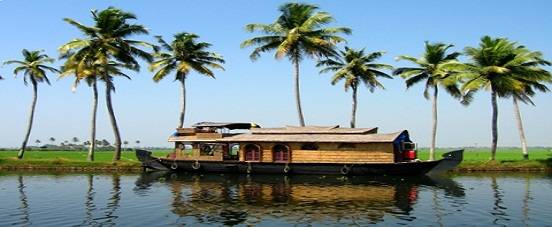
Image Source: http://osakaair.com/kerala-natural-wonders
The Mission and Vision of Kerala Tourism is to position itself as a global destination for tourism which, based on the advantage of the local resources, thereby attracting investment and resulting into sustainable development for the people of Kerala.
Framework of Kerala Tourism- This framework below is as per the National Tourism policy for Kerala State on which the whole strategy is formulated.
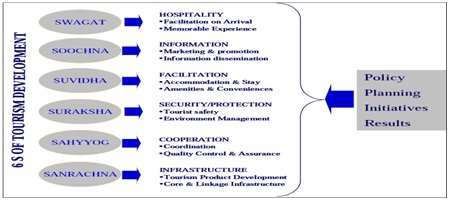
Source-a report on Kerala’s Approach to Tourism Development: A Case Study Ministry of Tourism Government of India and CRISIL
The implementation of this framework leaded to tourism development and the feedback received from domestic and international tourist were that they wanted to revisit the state and What Kerala has done is that it has made tourism a sustainable business venture and developed on a positioning strategy with proper Tourism Marketing Communication Mix.
Gods Own country’s contribution to India-Kerala which has a mixture of Beaches, Backwater, Ancient Medicines, Natural wealth, Multicultural cuisines good weather and highly educated people makes Kerala irresistible to foreign and domestic tourist. In 2010 Kerala had 3.7% share of the total foreign tourist arriving in India. We can find out from the below table that how Kerala has grown since 2002 till 2010 in terms of Number of arrivals and Foreign Exchange earned.
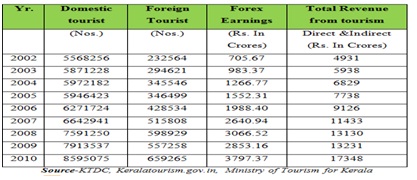
It was also observed that from 2002 till 2010 the Top 3 countries tourist who visited Kerala were UK, France and the USA. And the top 3 places visited by them were Ernakulum, Thiruvananthpuram, and Idukki. The Top 3 favourite places visited by Domestic tourists were Thrissur, Ernakulum, and Thiruvananthpuram. The domestic tourist was predominantly from States like Tamil Nadu, Karnataka, Maharashtra, Andhra Pradesh, Delhi and Gujarat. These states are sharing the border with the state and where there is high number of corporate houses.
SWOT analysis of the State
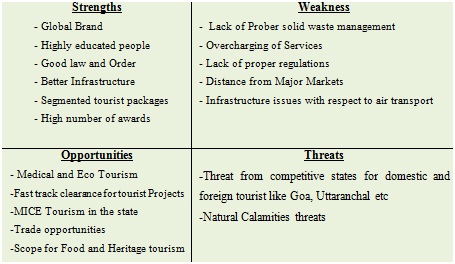
So what kind of profile the tourists have?- The USP of Kerala lies in the following- Backwater Tourism, Ayurved and Spa, Houseboats Tour, Temples, Islands and Tea Gardens. The favorite month for the tourist is between November to January. The STP for Kerala could be defined as
Segment-SEC A,B, and C, Age Group between 20-59, Mostly People into Service, Industrialist and Self Employed
Target-More of Corporate and Every class of the Society
Positioning-MICE tourism (Meetings Incentives Conventions and Exhibition) combined with Eco tourism for Business tourism, and Eco and Heritage tourism internationally and domestically for non business tourism
Tourism Segmented by tour objectives – Based on the above segmentation Kerala has the following segment various tourist package as a)Dream Season – Off season Budget tourist Packages b)Best of Kerala–Luxury Tourism c)Captivating Kerala–Tea Gardens, Spice Plantation and Fort d)Kerala Culinary Tour–Food Tourism e)Exotic Kerala–Resorts in Nature Temples and Ayurvedic Massage f)Hills & backwater–Backwater and House Boat promotions g)Honeymoon package–Houseboat, Wildlife resort, Temples, Backwater resort h)The Treasures Of Kerala–Promoting Beaches and Nature etc.
What Marketing Communication strategy Kerala Tourism Implements?
1. Web Promotions–Kerala Tourism website receives nearly 1.5 million hits and 2.50 lakhs page views per month. The key contents in the website includes Key Contents of the Website include Ayurveda, Cuisine, Boat Races, “Plan Your Trip”, Festival Calendar, Shopping Options, Picture and Video Gallery, Destination Gallery, and Visitor Queries.
2. MICE Tourism–It is positioned as the ‘Corporate Playground’. This product is highlighted in all road shows and trade meets. The websites through its strategy of trade promotions uses its USP like the backwater and promote foreigners in the pictures to indicate tourism while they are on their business trip.
3. Separate promotion of Eco Tourism and Business Tourism
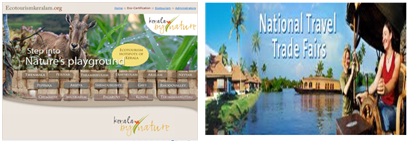
4. Separate International Print and Website Advertising–Promoting Beaches and other destinations with a foreign people in the advertising.
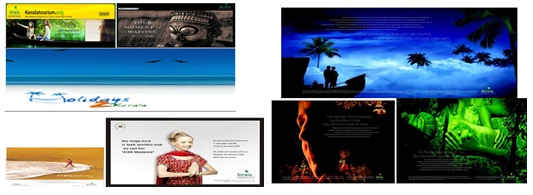
5. Sponsorship of Events like Co-sponsor of Kovalam Literary Festival, the India International Boat Show, organized by Kerala Tourism jointly with India Tourism, Sponsored VAGA Fest at Kerala
6. Participation in International Fairs-Kerala tourism participates in all the major international events related to its identified source markets. Some of the key international fairs the state has participated in the year 2003 were-International Tourism’s Bourse (ITB) 2003, Berlin, Arabian Travel Mart (ATM), 2003, Dubai, PATA Travel Mart 2003, Singapore, World Travel Mart (WTM) 2003, London etc.
7. Overseas Partnership-Kerala is the first state in India, and indeed the world, to become the ‘partner state’ to the World Travel and Tourism Council which is a global forum for travel and tourism
8. Collaboration With PATA and Germany for international Branding by participating in meets and forums and using the Bilateral Agreement Germany has agreed to development of tourism market in Kerala example development of backwaters, Solid waste management, Human Resources Development in Kerala are some of the initiatives
9. Certification of Places-Certifications of tourist resources like ‘Gold Star’ and ‘Silver Star’ Certifications for Houseboats, ‘Green Palm’ Certifications for Eco-friendly Measures, ‘Green Leaf’ Certifications for Ayurveda Centres, ‘STEP’ Certification for Safe-To-Eat Places certification creates benchmarks for tourist spots and gives tourists an Idea about tourism credibility in terms of food, safety and services.
Way Ahead – The Tourism Department of Kerala projects a growth rate of 7 % per annum in foreign tourist arrivals and 9 % annual growth in domestic tourist arrivals as per Tata Economic Consultancy Services and 12% as per 12th Fiver Plan. The following steps can help ensure prosperity in the Local and MICE tourism
Encourage Upcoming Places – Through the tourism data we can analyze that the places like Guruvayoor, Kumarkom, Munnar, Wayanad, and Muzhupalingad are the upcoming tourist spots. These spots can be clustered with other less tourist areas and a theme based concept can be introduced to promote the same. The advantages of this theme would be more employment in the nearby areas, access to tourist through its transport, and customized tour packages will give a different tourist experience altogether.
Encouraging ‘Free Market’ concept – This will boost trade within the state. Kerala is known for tea plantations, cashews, sea foods, and spices. These are generally manufactured by small and medium farmers. The state can give temporary license to market their products in other part of the states for say 15 days for 3 months. The infrastructure cost can be borne by the government and it can earn revenue through license and taxes. These ‘temporary’ markets will boost trade in non core areas, better bargaining power to the domestic and foreign tourist, and more tourist attraction to the places.
Focus on MICE tourism – Exports products like Fishes, Cashew to country like USA, UAE, Netherlands, Russia, Germany and Asian countries plays an important role in developing MICE tourism. These exports are more through the ports, so for MICE tourism, the exporting country nationals can be pitched for Food tourism, Medical Tourism and Backwater tourism.
This tourism would set benchmarks for setting up Industrial centres in the states which will give additional boost to development of states. So the Meetings and convention centres would have water sports and backwater resort facility with the flavour of local cuisines. The state could identify the exports towards countries like China, Russia, Malaysia and Scandinavian Countries and can give tax holidays for countries that increase the exports over the years.
Advantage of being Tech Savvy – The website can be made interactive and the tourism state minister speech can be uploaded laying its vision and seriousness towards its tourist and a mobile app wherein online booking, Location information, and budget calculator can help prospective tourist.
So from the strategy and suggestions above the model can be followed for MICE and general Tourism
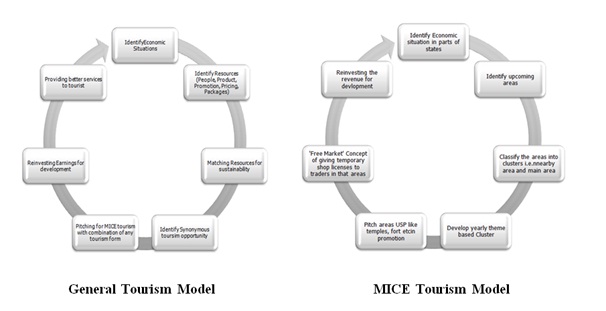
Conclusion – Kerala being one of the states which is an example of Sustainable tourism needs to market various other forms of tourism like Heritage, Food and Medical tourism by the strengths of the clustered area as suggested above. This needs support from Private players and the government needs to act as a facilitator for these activities in terms of certifying the tourist spots for benchmarking activities. The government need to enter into bilateral agreement to solve the infrastructural issues domestically and internationally which will further boost economic development.
This article has been authored by Sushant S Srivastava from SIES College of Management.
Views expressed in the article are personal. The articles are for educational & academic purpose only, and have been uploaded by the MBA Skool Team.
If you are interested in writing articles for us, Submit Here
Share this Page on:
What is MBA Skool?About Us
MBA Skool is a Knowledge Resource for Management Students, Aspirants & Professionals.
Business Courses
Quizzes & Skills
Quizzes test your expertise in business and Skill tests evaluate your management traits
All Business Sections
Write for Us